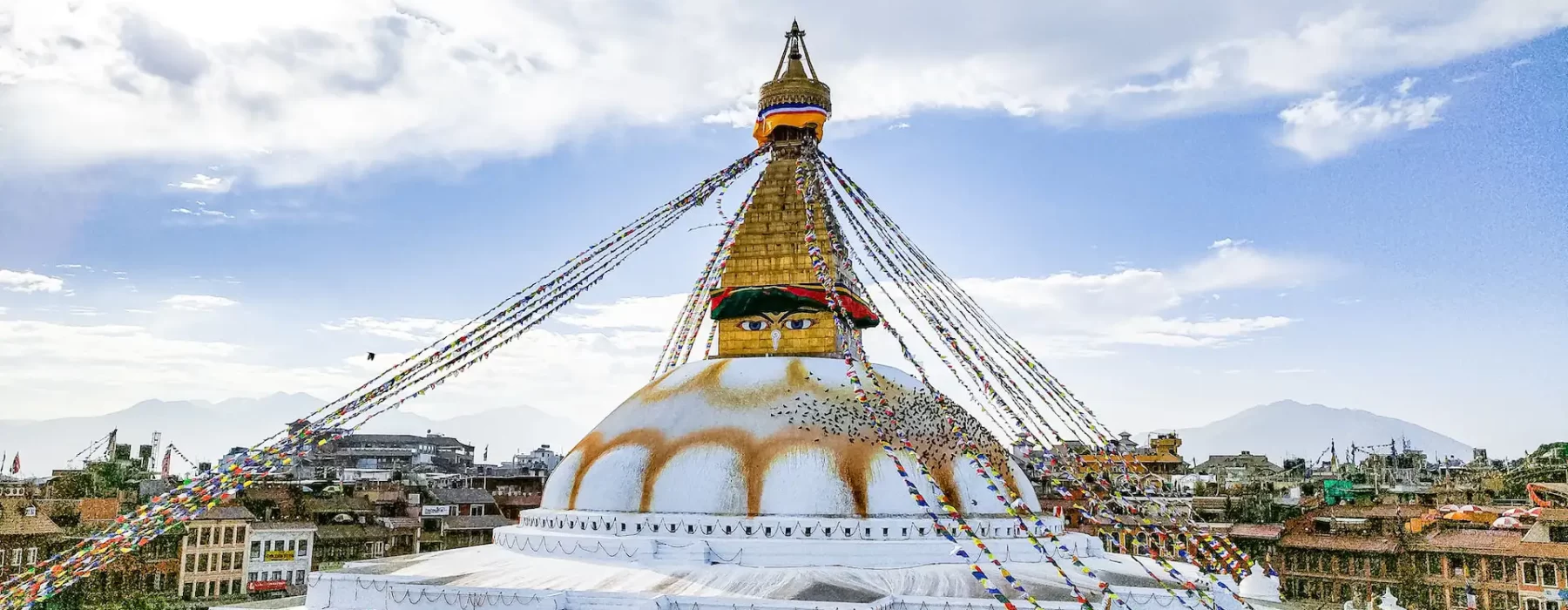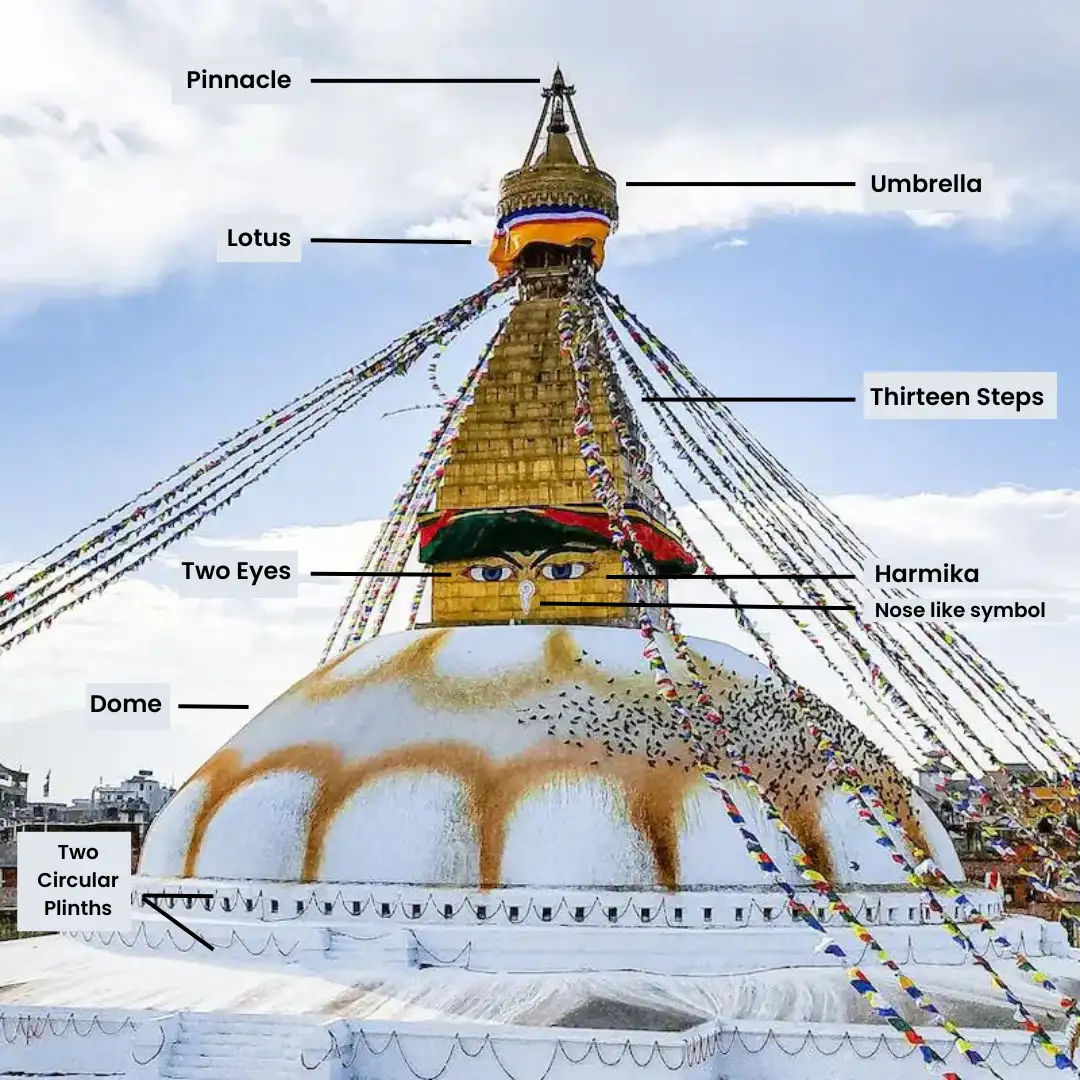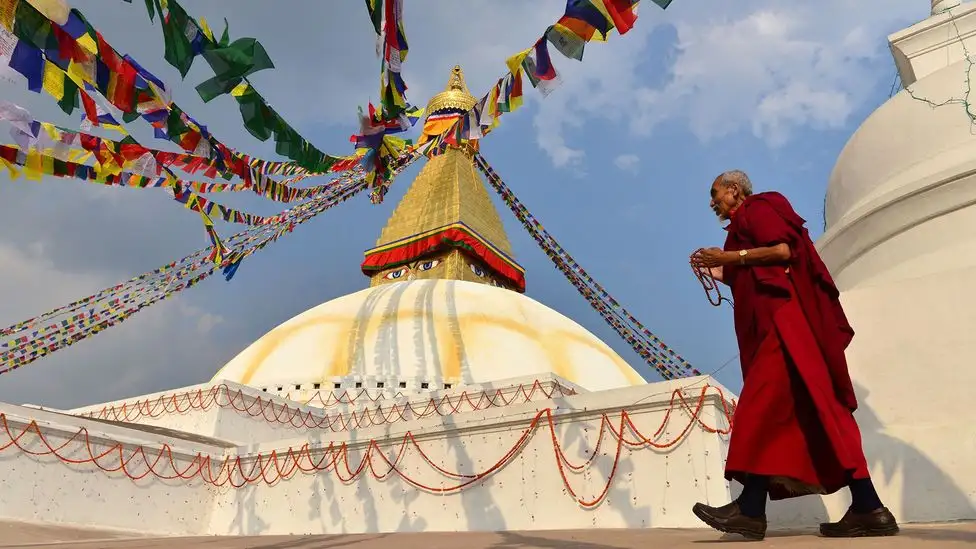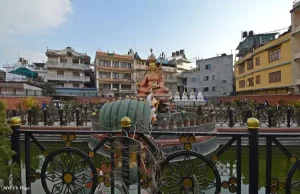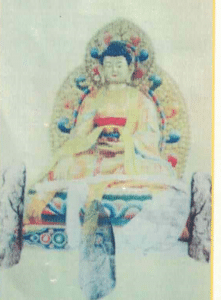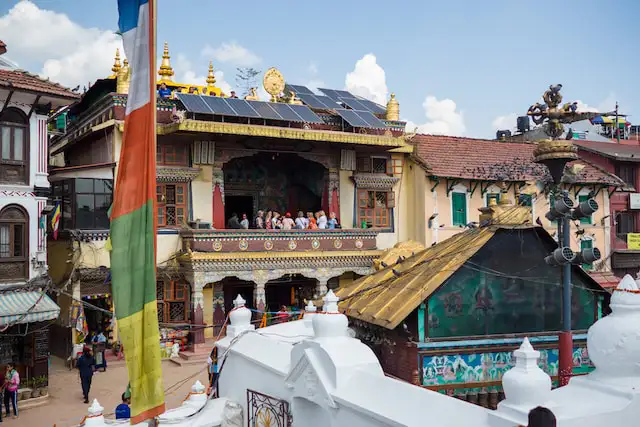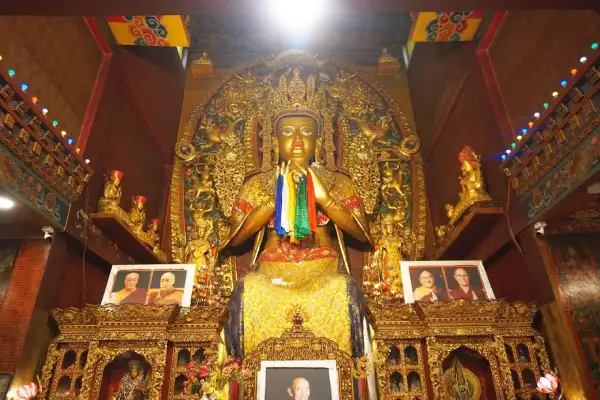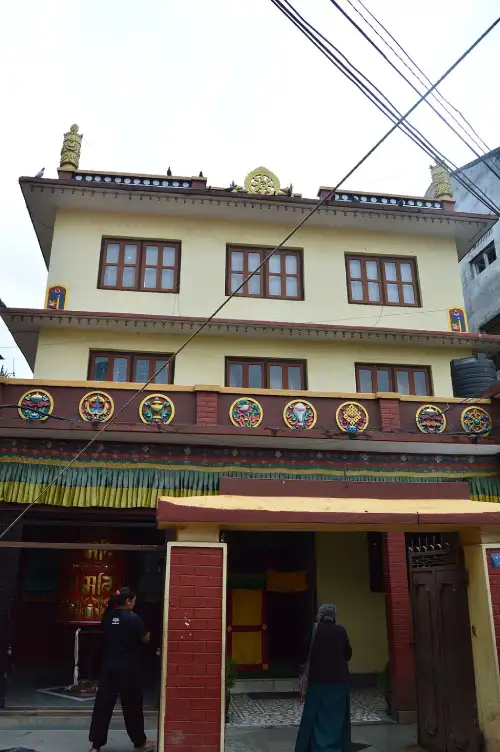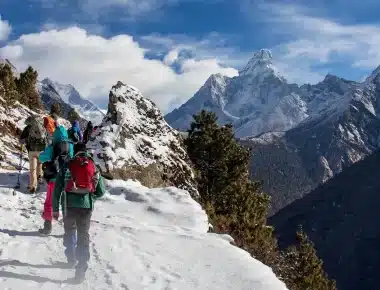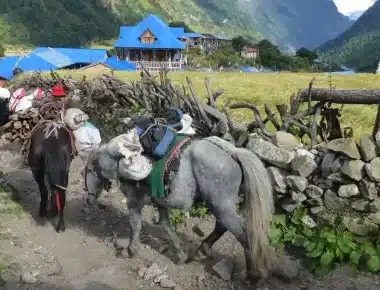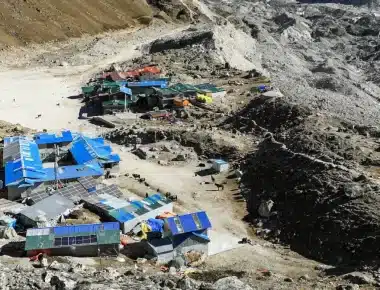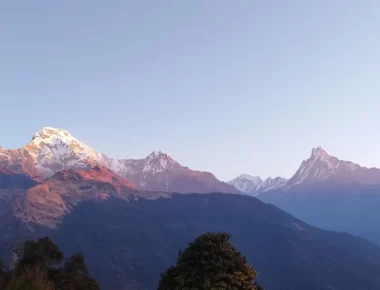Bouddha Stupa, also known as Boudhanath or Jhyarung Khashyor, stands approximately 8–9 km northeast of the center of the Kathmandu Valley in Nepal.
Boudhanath is also one of the oldest stupas with ancient stories and facts attached to its origin and history. The splendid dome also makes it one of the largest and most significant Buddhist monuments in the world.
This Buddhist heritage has been a major attraction for domestic and international tourists for a very long time. But no one exactly knows how old the Boudhanath stupa is. After UNESCO enlisted it on the world heritage list in 1979 AD, its popularity rose, making it one of the prominent Buddhist heritages in the world.
If you are in Kathmandu, then this spiritual destination must be on your bucket list. Connected to the main roadway in Kathmandu, the shrine is easily accessible with a half-hour taxi or with a Kathmandu sightseeing tour.
Table of Contents
- The symbolism of different parts of the Boudhanath Stupa
- Brief History and Origin of the Great Boudhanath Stupa, Kathmandu
- Restoration of the Boudhanath Stupa
- The benefits of circumambulation and offerings to Boudhanath Stupa
- Important sites around the main Stupa in Boudhanath
- Festivals celebrated at Boudhanath Stupa:
- The main Buddhist destinations in Nepal
The symbolism of different parts of the Boudhanath Stupa
- Different parts of main Boudhanath Stupa
- Mandala – Mansion of Buddha
- Dome – Symbol of universe or Vase of great treasure
- Two Eyes – Symbol of method and wisdom
- Harmika – Symbol of eight noble paths (Right view, thought, speech, action, livelihood, endeavor, mindfulness, and right meditative concentration)
- Nose-like Symbol – Symbol of Nirvana
- Thirteen Steps– The thirteen tastes of Bodhisattva’s ground for the complete enlightenment
- Lotus – Symbol of compassion and purity
- Umbrella – Protector of three jewels: Buddha, Dharma, and Sangha
- Pinnacle – Symbol of Mt. Sumeru (The king of the mountains.)
Some other parts of Bouddha are:
Prayer flags: Prayers flags are known as the carrier of mantras and prayers. When the wind flutters the flags around Stupa, it is believed to spread prayers and positive vibes.
Two Circular Plinths: Two circular plinths are supporting the stupa just below the dome and they represent water.
The decreasing platforms: The three decreasing in size, large platforms at the stupa’s base symbolize earth.
Brief History and Origin of the Great Boudhanath Stupa, Kathmandu
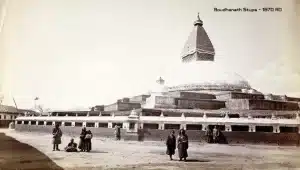
Source: thestupa
There are many stories and tales concerning the origin and history of the Boudhanath.
Ma Jhyazima Story
According to “Hidden Treasure of the Guru Padmasambhava,” a widow named Ma Jhyazima aspired to make a great offering of Boudha and, using her hard-earned savings as a poultry keeper, approached the local king for permission.
Although she was granted permission, it came with the condition that she should only use the land by measuring the size of a single ox skin. However, Jhyazima cut the ox skin into thin strips and claimed the land enclosed by the strips, which she laid end to end.
This woman’s mere ambition to build such a magnificent monument offering to the Buddha caused much jealousy between the rich and powerful at the time.
The jealous lord asked the king to halt the construction, but the king denied his request.
The remaining work in the construction of the Boudhanath stupa was completed by the four sons of Jhyazima. They were Trisong Deuchen, Shanta Rakshita, Guru Padmasambhava, and Bami Thiser. This story is very popular in the Himalayan Buddhist society.
Lichhavi Connections of Boudhanath History and Origin
The earliest historical references to the Boudhanath Stupa can also be found in the Chronicles of the Newar Society.
Firstly, Bouddha is mentioned as one of the four stupas found by the Licchavi king Vrisadeva (ca. AD 400) or Vikramjit.
Secondly, in the Newari narrative, the stupa’s origin is attributed to King Dharmadeva’s son, Manadeva. He was the great Lichhavi king, military conqueror, and patron of the arts who reigned ca. AD 464-505. Manadeva is also linked with the Swayambhu Chaitya of Gum Bahal.
Thirdly, another great Lichhavi king, Shivadeva (AD 590–604), is associated with Boudha with an inscription; he may have restored the Stupa.
Finally, in the archeological report of the 16th-century Tibetan restorer Sakya Zangpo, there is an assertion that he discovered the Lichhavi king Amsuvarma’s relics in the Stupa. No Lichhavi stones remain in the vicinity of Bouddha. Although in the eastern enclave of the Stupa, there are several updatable but undoubted ancient stones inscribed with mantra, and in the south, there are small Chaityas in the Lichhavi style, which could perhaps be dated as early as the 13th century.
In conclusion, although there is no epigraphical, archeological, or literary evidence of the Stupa’s Lichhavi origins, its past history is entirely based upon narratives.
Newari Etymology and Relations of Bouddha Stupa’s Origin with Khas People
Clues to the Boudhnath Stupa’s origin and history can be derived from the etymology of the Newari name of the Stupas Khas or Khasti Chaitya, “The Dewdrop Stupa”. Some believe the name is derived from Kasyapa, the Manusi Buddha of the Dwapara-yuga, whose relics are said to be enshrined within it.
According to Newari etymology, it is derived from the Newari word for “dew”, mentioned in chronicles mentioned that when the stupa was in the process of construction, a drought struck and the workmen were forced to lay out white cotton cloth to collect the morning dew, which was then wrung out to facilitate the day’s construction.
Some say Khasa was the name of a Tibetan Lama whose relics were enshrined here. Thus, some people believe Boudhanath’s origin was associated with the town of Khasa, on the present border of Nepal and China.
History of Boudhanath according to Gopal Raj’s Chronicles
According to the Gopal Raj Chronicles, during the reign of the Lichhavi king Dharmadeva (ca. AD 4th century), it is said that the king installed “Narayanhiti stone spouts,” but the water did not come. So the king consulted his astrologers and was told to sacrifice the most virtuous man in the kingdom for water.
After disappointing results, the king decided that only he and his son qualified as victims. The old king decided it was he who had to die. So he instructed his son to decapitate a shrouded figure with one stroke he would find lying near the palace that night.
Prince Manadeva obeyed his father’s command and was horrified to see his father’s head fly from the corpse. It landed at the temple of Vajra Yogini in Sankhu. The goddess then told him that the only way he could undo his sins was to let a cock fly and build a stupa for his father wherever the cock landed. The cock alighted at Boudhanath, and King Manadeva built a magnificent stupa there.
Restoration of the Boudhanath Stupa
- Source: Images of the Century
Ngakchang Sakya Zangpo, who was a Nyingmapa Tantric master, discovered and restored the revealed legend of the Great Stupa. Ngakchang lived in the last half of the 15th century and the first part of the 16th. He constructed the stupa, probably in the same form as it stands today.
In 1818–19 A.D., Jogchen Shyabkar Chokdrul Rangdol kept gold-plated copper in the Harmika of the Stupa.
In 191–19 A.D., Shakya Tokden Shree contributed to the restoration of this stupa. Similarly, after his demise in 1919 A.D., his sons completed the remaining work of Stupa.
The modern history of the Boudhanath Stupa is related to the Chiniya Lama tradition. In 1859 A.D., Rana, the prime minister, appointed Chiniya Tai Fo Sing as the priest of Boudhanath Stupa. He and his generation contributed to the preservation of this great stupa. Likewise, different dharma masters played a vital role in the restoration and preservation of this great stupa.
Among the people who worship and preserve the stupa, the local Tamang community plays a vital role. However, the Tibetans now form the numerically dominant group and are the most active community of devotees.
The Newars and Sherpas are also part of many ethnic groups that keep the ancient Bouddha Stupa alive and sacred today as it was centuries ago.
The recent restorations are an effort to preserve this monument for many more generations to come.
This great Boudhanath stupa was badly damaged by the devastating earthquake on April 25, 2015. However, it was renovated by the Boudhanath Area Development Committee with technical support from the Department of Archaeology and contributions from different organizations and Buddhist devotees. The renovation started on May 24, 2015, and was completed on November 15, 2016, at a total cost of Rs. 230 million. Then it was inaugurated by the then-prime minister of Nepal on the auspicious day of Lhabhab Duichen (the day Lord Buddha descended from Tushita Heaven).
The benefits of circumambulation and offerings to Boudhanath Stupa
According to the hidden treasure of Guru Rinpoche, Buddha and the Bodhisattvas of the three times have dissolved into this wonderful stupa. It is like a wish-granting jewel that automatically answers any entreaty or prayer that is made to it.
So even the Buddha of three times could not fully express or enumerate the benefits to be gained when some sentient beings with a pure mind circumambulate and make offerings to it. This is the supreme mental focal point for all Buddhas of the three times, a field of the offering of all beings, including gods.
Any entreaties and prayers that are made to Boudhanath will automatically be realized. It grants all of the supreme and ordinary accomplishments. All births in the lower realms will be halted for any sentient beings who pray and circumambulate this great Bouddha, which is a reminiscent “wish-granting jewel“.
- Monk circumambulating Bouddha, Image Source: BBC
Whoever hears and mentions Boudhanath will have placed the seed of enlightenment in their mind. All of those who recall it will be saved from fits of madness and paralysis and will gain an especially focused concentration. All of those who fold their hands as a mark of respect for it will come to the correct path.
Whoever offers prostration in homage to Bouddha Stupa will take birth as a chakra-wielding monarch of a thousand world systems.
All of those who circumambulate the Bouddha Stupa will acquire the seven qualities of the higher existences. Whoever makes entreaties to it will effortlessly accomplish the two purposes. All of those who make offerings to it will be born in a place that knows no drought.
Whoever offers flowers will be sure to obtain an excellent human birth with all the conditions required for the practice of Dharma.
All of those who offer incense will be sure to gain pure moral conduct. Whoever offers butter lamps will have the darkness of their ignorance dispelled.
All who offer scented water will be released from every form of mental disquiet and suffering.
All those who offer Mandalas of the five precious substances will never again suffer from poverty or destitution but will gain access to a treasury of wealth as limitless as the heavens.
All of those who offer lamps will directly behold the countenances of all Buddhas and Bodhisattvas in the ten directions. Whoever offers seed-oil lamps can be sure that all of the obscurations of their ignorance will be purified. Those who offer a fabric panoply and whitewash to the Stupa will secure for themselves a physical radiance and splendor as well as a mastery over gods, demons, and humans.
All of those who receive blessings from Boudhanath will receive empowerment from all the Buddhas in the ten directions.
A miraculous birth appearing at the center of a lotus in the pure northern land of Sukhavati awaits anyone who remembers this stupa at the time of death.
But those who inflict harm upon it will, in that same life, become objects of all sorts of non-virtue. Then, in their future existence, they will be born into the Avichi Hell of Ceaseless Torment, a state from which there will be no possibility of escape and no means of atonement for the actions that got them there.
In summary, this great heritage site in Nepal is reminiscent of the fabled wish-granting precious jewel. If you invest in it, you will have the power to bring about whatever accomplishment is required, whether it is supreme or ordinary, and the ability to answer any supplication. Henceforth, Boudhanath Stupa is known as “The Stupa that Answers All Prayers“.
Important sites around the main Stupa in Boudhanath
- Agima Temple, Suraj Belbase, CC BY-SA 4.0, via Wikimedia Commons
- Historical Pond and Ghyoilisang Peace Park, Photo by: Melamchim-Ghyang
- Historical Tinchuli
Ajima Temple
Ajima Temple is located to the north of the main Boudhanath stupa. It is the temple of Goddess Mamo Pukasi, who is known as the protector of the stupa area. She is also known as the “wish-fulfilling goddess. The lama (priest) performs offerings and prays to the goddess Ajima every morning for the welfare of all sentient beings.
Historical Pond and Ghyoilisang Peace Park
This pond is located to the northwest of the Boudhanath stupa and has an area of 15745 sq. ft. This pond is called Ghyoilisang in the local Tamang language. The soil of this place was used during the construction of the Boudhanath stupa, which was then turned into a pond. So, this pond has historical value.
Historical Tinchuli
The name is Tinchuli originated from the three big rocks that were used in the fireplace for cooking for workers during the construction of the Boudhanath stupa. Those rocks are still in the same place today, and the Shree Boudhanath Area Development Committee has established Buddha’s statue there. This place is about 1 kilometer away from Boudhanath Stupa.
Monasteries of four traditions in Boudhanath
- Guru Lhakhang Monastery
- Jhamchen Lhakhang Monastery
- Samtenling Monastery
- Dilyak Yebam Monastery, Suraj Belbase, CC BY-SA 4.0, via Wikimedia Commons
Guru Lhakhang Monastery
Guru Lhakhang Monastery is one of the oldest Nyingma monasteries in the Bouddha area. It is also called the Tamang Monastery of Boudhanath. This was referred to as Guru Marmen Lhakhang the previous time.
The main attraction of the monastery is the beautiful statues of Guru Padma Sambhava, Amitabha Buddha, and Arya Avalokiteshwara.
The Chiniya Lama and the local Tamang Lama perform traditional and ritual activities in this monastery. Although this monastery belongs to the Nyingma sect, it has become the focal point of different Buddhist traditions or sects.
His holiness, Thulsik Rinpoche, performed consecration and inaugurated this monastery after it was rebuilt in B.S. 2063. Since then, the monastery has preserved its own Jhyang Ter tradition and ritual.
Samtenling Monastery
Samtenling Monastery was established by His Eminence Kachen Yeshi Gyaltsen. This is the oldest and first-ever Tibetan monastery to be established at Boudhanath. It is situated to the east of the Boudhanath Stupa.
This monastery has preserved its unique traditions of chanting and ritual activities. This magnificent monastery belongs to the Geluk tradition or sect.
Jhamchen Lhakhang
Jhamchen Lhakhang monastery was established by the venerable Chyopge Thichen Rinpoche on February 11, 1986. This monastery has a 32-foot-high statue of Maitreya Buddha (Gyalwa Jampa), the future Buddha.
This monastery is preserving its own Sakya tradition of chanting and ritual practice and belongs to the Sakya sect.
Dilyak Yebam (Pairi Tahsi Migyur Dorje Gyaltsen Ling)
This monastery was built in 1966 near the Boudhanath Stupa by Master Dazang Ngeden Chhoeki Ngima Palsangpo. Dilyak Yebam belongs to the Kagyud sect. All the Buddhist ritual practices and other dharma activities have been conducted here.
This monastery is also known as the Dhapsang Monastery of the Thousand Buddhas.
Festivals celebrated at Boudhanath Stupa:
Mamla Jatra
Mamla Jatra is celebrated on the full moon of the Nepali month Magh (January or February) in memory of Mamo Pukasi.
Mamo Pukasi is a goddess among the other eight goddesses. It is believed that she protects the Boudhanath area from evil. During the celebration, the chariot of Mamo Pukasi and the procession are carried around the stupa and its surroundings. Finally, the celebration concludes with offerings, feasts, and joy.
Chechyu Puja (the tenth-day ceremony of Guru Padma Sambhava)
The tenth day of every month of every year is a particular day of Guru Padma Sambhava. In Boudhanath, the tenth day of Magh/Poush (Dec./Jan.) is very important and is celebrated by offering and praying to Guru Padma Sambhava.
Lhosar
Himalayan Buddhists such as Tamang, Sherpa, and Tibetan celebrate Lhosar joyfully as the new year. This festival occurs between the second half of January and February. A lot of people visit Boudhanth and offer prayers during the day.
Temal Jatra
The Temal festival occurs the day before Chaitra Purnima (the full moon of March or April). During Temal Jatra, Tamang communities offer puja and pray in memory of their ancestors. It is also believed that this festival is celebrated in memory of the plantation of 64-J lotus in Nagdaha by Vipaohwi Buddha.
Buddha Jayanti
This festival is celebrated on the full moon in the Nepali month of Baisakh (April or May). It is also called Buddha Purnima. This is a holy occasion for Lord Buddha. Buddha Jayanti is known as the day of birth, enlightenment, and parinirvana of Lord Buddha. So, it is called “Trisamyog Diwas”.
The main Buddhist destinations in Nepal
- Lumbini (the birthplace of Lord Buddha)
- Swayambhunath Stupa
- Boudhanath Stupa (Jhyarung Khasyor)
- Namo Buddha

